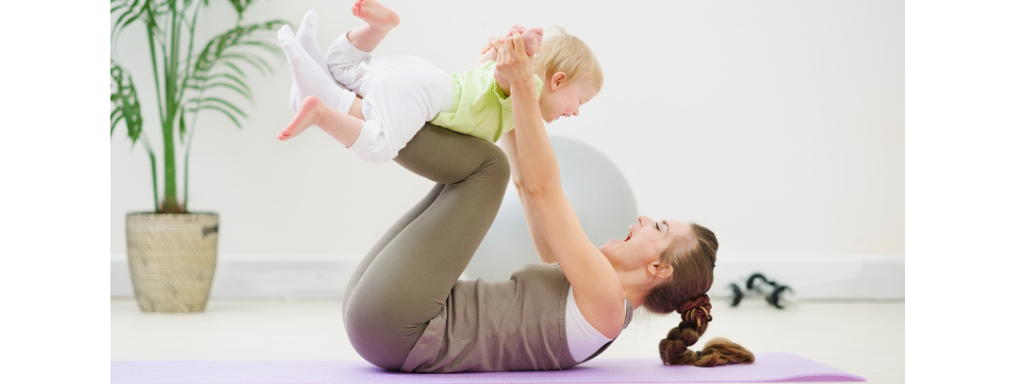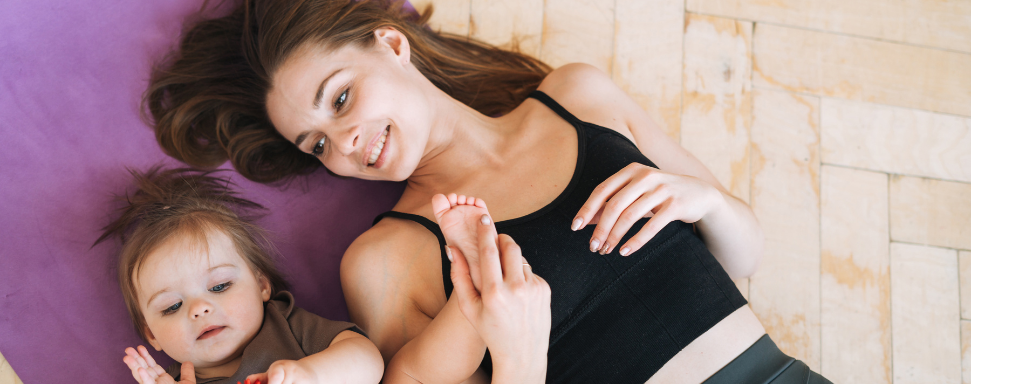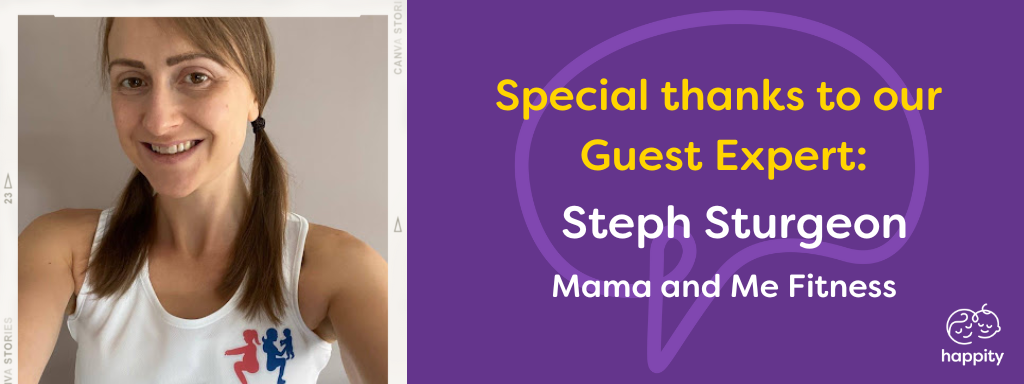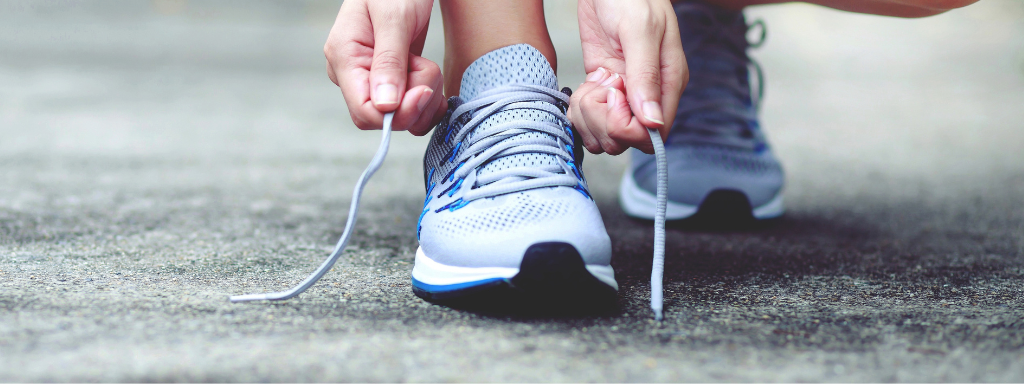Your whole world has been turned upside down whilst you navigate your new role with your precious bundle of joy. The fog of those newborn days starts to lift and you might be wondering how to resume some of your previous routine, including exercise.
As we well know, exercise has a plethora of health benefits, so you might be keen to get back to some movement as soon as you can, however jumping in too soon is not the best idea. Read on for five easy steps to help get back to exercise after giving birth, shared by Steph from Mama and Me Fitness, a qualified Pre & Post Natal Personal Trainer.
1. Wait Until You Are Feeling Physically & Mentally Ready
Everyone (and every birth) is different. Don’t rush it. Some people might be eager to get back into exercise after giving birth after a few weeks, other might be months. The most important thing is to wait until YOU feel ready. Don’t compare with others
How soon can you start? You can start doing pelvic floor exercises straight away after a vaginal delivery or once your catheter is removed after a c-section. Not only will this help strengthen muscles after giving birth but doing them will also reduce swelling and increase blood flow, which in turn will improve healing.
All other exercise depends on what type of labour and birth you had, and how active you were during your pregnancy.
If you exercised throughout your pregnancy and you had a straightforward delivery then you can resume light exercise and stretching as soon as you feel ready. Walking would be a good option to start with. If you had a c-section or an episiotomy / tearing after a vaginal birth, then you probably aren’t going to want to start exercising straight away.
Either way, take it slowly and listen to your body – you’ve been through a lot and it’s more important to rest and get to know your baby.
The general guideline for resuming more intense exercise such as strength training or fitness classes is 6 weeks post vaginal or 10-12 weeks post c-section. However, for anything ‘high impact’ such as running or HIIT, you should wait at least 12 weeks.
Don’t go swimming until you’ve had your post-natal check and at least 7 days with no bleeding / discharge.
Again, listen to your body and don’t jump straight into anything too strenuous – try to build up gradually and modify anything high impact initially.

2. Warm Up!
Louder for those at the back!
Don’t be tempted to skip the warm up. Your body is still full of the hormone, Relaxin, which loosened your joints in preparation for birth.
This hormone sticks around until about 5-6 months post birth (longer if breastfeeding) and makes you more susceptible to injury. So take the time to warm up properly. This could be spending five minutes doing some full body mobility work, to move all your joints through their range of motion and warm up the muscles.
3. Pace Yourself
Start small.
If you exercised during pregnancy then your intensity wants to be around the same as you were working at the end of your pregnancy. The fact that you’re approaching exercise after giving birth means your body has been through a lot. So don’t push yourself too quickly.
If you didn’t then just take it slow (and you’re doing strength training) then start with just using your bodyweight or light weights. And make sure the movements are slow and controlled and you’re using proper form. You can then progressively overload by increasing the volume or intensity. Just make sure you drink plenty of water. Especially if you’re breastfeeding. Fuel yourself with a balanced diet and get as much sleep as you’re able to, to ensure you recover properly.
Once you’re able to resume high impact activity such as running, again pace yourself. Start slow and gradually build up your speed and distance.
If you are extremely sleep deprived then pushing yourself to do exercise which is too intense will just put extra stress on the body and won’t do you any good. So stick to light exercise such as walking or yoga until sleep patterns improve.
If you aren’t sure what exercises will be best for you then get some advice from a Pre & Post Natal Personal Trainer.

4. Prioritise Your Core
Getting back into exercise after giving birth will mean looking after a part of your body that was under a lot of pressure. Your core may be feeling very weak and it’s no surprise, childbirth is no mean feat!
Just like everything else it’s about building up gradually. Start with some diaphragmic breathing exercises and pelvic tilts. Then move onto simple core activation moves and gradually move through to more advanced core exercises as you get stronger.
It’s possible you may have some ab separation (diastasis recti) which is normal after delivery. For most women this is resolved in a few weeks. But for others it may take longer and require some more focus. If during core exercise (or any exercise) you notice any hard stomach doming (where your stomach protrudes into a hard cone) this could mean you have some separation. You may be putting too much pressure through your core, so dial down the intensity or stop completely. Ask your GP to check your abs when you go for your post natal check or ask to be referred to a Women’s Health Physio.
You will feel stronger in every way if you have a strong core so try to prioritise core work as much as possible.
Just 5-10minutes of core exercises 2-3 times a week will really make a difference.
5. Not Feeling Good? Get Yourself Checked
If you’re struggling with any incontinence / pelvic floor symptoms or prolapse or think you may have some ab separation then book an appointment with a Women’s Health Physio. Although common, these symptoms shouldn’t be considered ‘normal’ and need to be addressed. Many people will say it’s what happens after having babies… But you don’t need to live with those symptoms and it can be helped.
Thanks To Steph – Mama And Me Fitness
I am a qualified Pre & Post Natal Personal Trainer, my aim is to help busy & tired mums make exercise and healthy eating work for them, without restrictions or fad diets.
I offer fitness classes and Personal Training in the Leeds area, along with Online Coaching which is UK wide.
For more information about the services I provide or to get in touch, please visit my website or you’ll find me on Facebook and Instagram.

Want To Get Out And About, Have Fun With Your Baby Or Toddler, And Meet Other Parents?
Search Happity to find everything that’s happening for the under-5’s in your local area – from music and singing classes, to messy play, arts and crafts, baby massage, gymnastics and more. Simply enter your postcode and child’s age to search, and then book your spot in a few taps. Enjoy dedicated fun time with your little one, watch their skills develop, and make friends at the same time. Mums, dads, grandparents and carers will all find something to love!
If You Found This Post Useful, You May Also Like:
5 Simple Skincare Basics For Parents Who Don’t Have Time



0 Comments